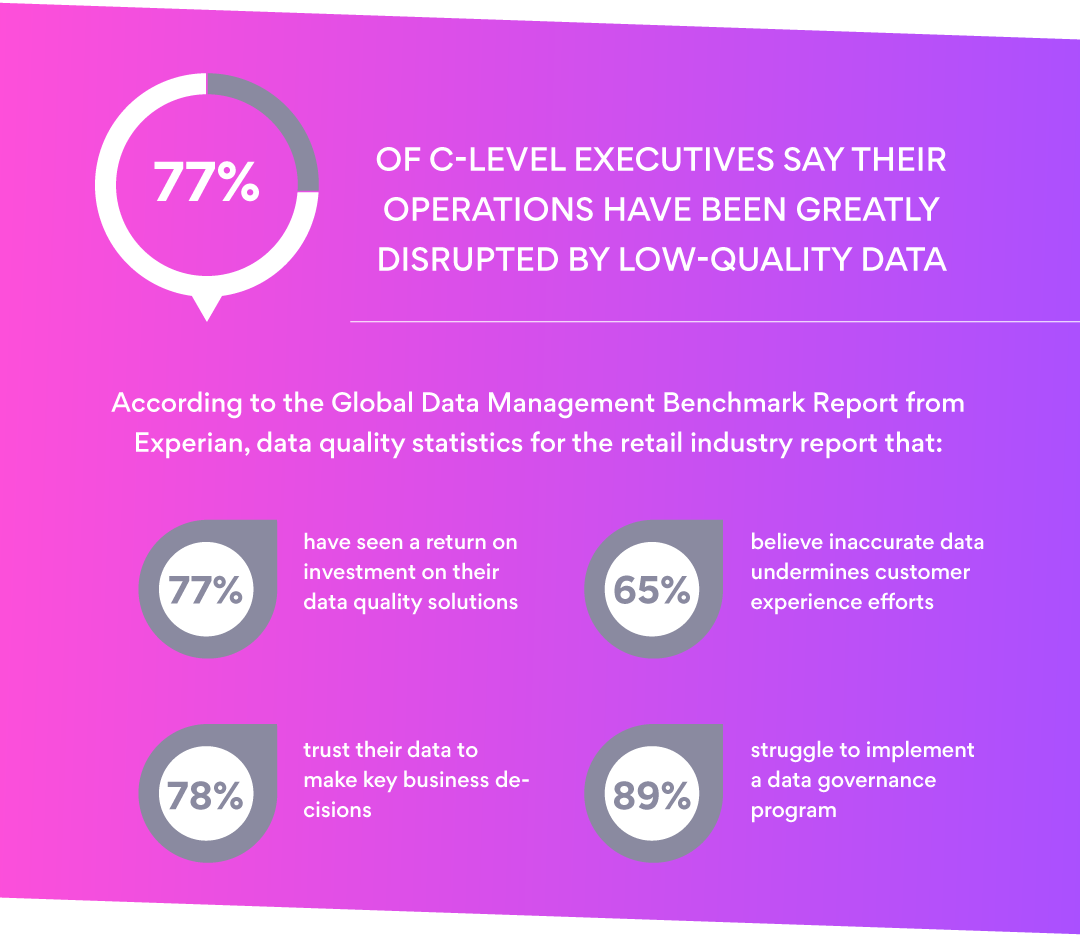

Making better and faster decisions with data is mission-critical for retailers. With the digital universe doubling in size every two years, retailers can access tons of data from several sources such as e-commerce transaction data, electronic point of sale (EPOS) data, in-store sensor data, and supply chain systems, in addition to social media metrics and customer online engagement.
Many retailers are still struggling when it comes to the quality of data, especially as more and more information on products and customer behaviour is collected. According to Forbes’ report, only 13% of organisations say they’re making the most of their available customer data.
It is crucial for retailers to explore how evolving technology can help them gain a competitive advantage. Artificial intelligence (AI) and guided selling have the ability to achieve this via improving retailer-customer interactions or automating administrative and logistical operations.

Fortunately, Artificial Intelligence (AI) and Machine Learning (ML) make the job of cleansing and tuning data much easier, faster and more accurate than ever before.
The time that the data scientist spends cleaning up data should be actually used to make the organisation more productive using this data. Machine Learning saves the data scientist from this hassle. He creates a learning model to predict matches; as more data enters the system, the more Machine Learning fine-tunes the model.
With manual data cleaning using traditional computer programs, when more data is added, more problems occur. With Machine Learning, the more data is added, the less the risk of having a problem. If machine learning manages to focus on systematically enhancing its function in analysing, rating and utilising data, it will excel at correcting, updating, fixing and refining data.
Now is the time for every retailer to make use of their data to drive customer loyalty, trust, engagement, and safety (even beyond the pandemic).
1. Closing the data gaps between the physical and online stores
Consumers expect retailers to provide a seamless experience regardless of the channel they use – in-store, online, via mobile device, or in-store kiosk. That is the essence of Omnichannel Retail. However, most retailers have massive organisational gaps between their brick-and-mortar stores and e-commerce divisions.
Examples of issues consumers face:
• An online order placed for pick-up at the retailer's nearest location will not be available when the customer arrives, as inventory data between the physical stores and online is not integrated and updated in real-time.
• Because in-store and online systems do not always communicate clearly, managing in-store returns for online purchases is difficult, causing problems.
2. Customer insights and personalisation
Retailers face challenges in integrating data from multiple organisational and data depots, such as loyalty programmes, POS transactions, online sales, demographics, and promotional responses. Most statistical models developed to predict future purchases and responses to promotions are frequently based on a very limited set of demographic and transactional data, ignoring the wealth of customer data that is currently available. So, while the data for 1-to-1 marketing and personalisation is now available, very few retailers are adept at utilising it!
3. Real-time vs. batch data especially for promotions
Consumers respond best when they receive promotions in real time and at the point of purchase. However, most retailers rely on bulk data sent in batches, which is used to send coupons to consumers' homes or emails in the hope that they will use them in-store later. These delayed promotional offers result in low coupon redemption rates that rarely exceed 1%, whereas targeted real-time offers that use beacons to recognise consumers and based on their profiles can result in redemption rates of between 60 to 70%.
4. Location and weather data
It's all about adjusting your product and service offerings to the consumers who live in your neighbourhood! A key differentiator is using geospatial data and local market information to select the best location and then customising the store's format and product selection to the neighbourhood. Have you taken advantage of the baseball game happening in the stadium next to your store?
The weather also matters – especially if you have a clothing section and it is a warm winter. As a result, incorporating weather data into your forecasts as soon as possible will be essential.

Retailers can learn more about their customers – their behaviours, preferences, and how they interact with their store and different brands – by using ML/AI both during and after COVID-19. This data can also be used to ensure that retailers adhere to customer health and safety protocols across their stores in various regions, which is critical during a pandemic.
This can help retailers to reach strategic level decisions in a variety of ways, including price optimisation, inventory planning, and even driving new product development. Because COVID-19 has caused changes in consumer purchasing habits, retailers must focus on insights to capture the most possible accurate overview of their current customers.
Intouch.com helps retail companies maximise the value of their data by offering cross-industry solutions for optimising and automating physical stores, offering personalised in-store shopping experiences using advanced AI, Machine Learning, and Big Data Analytics algorithms. Get intouch to learn how we can help you make the best out of your data.